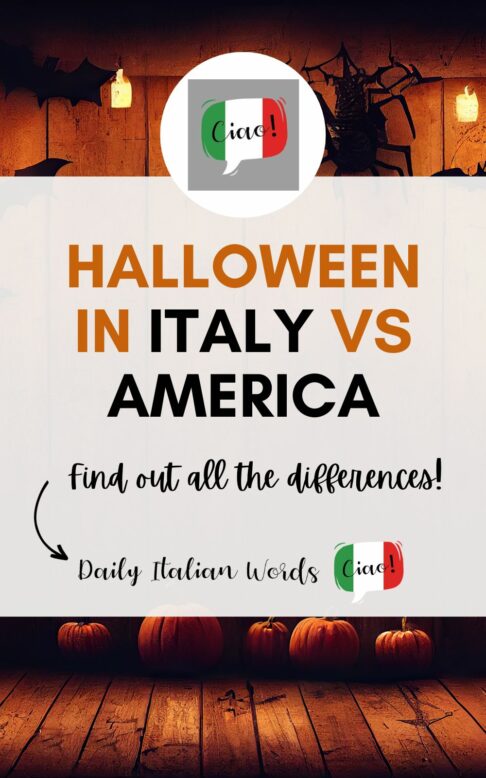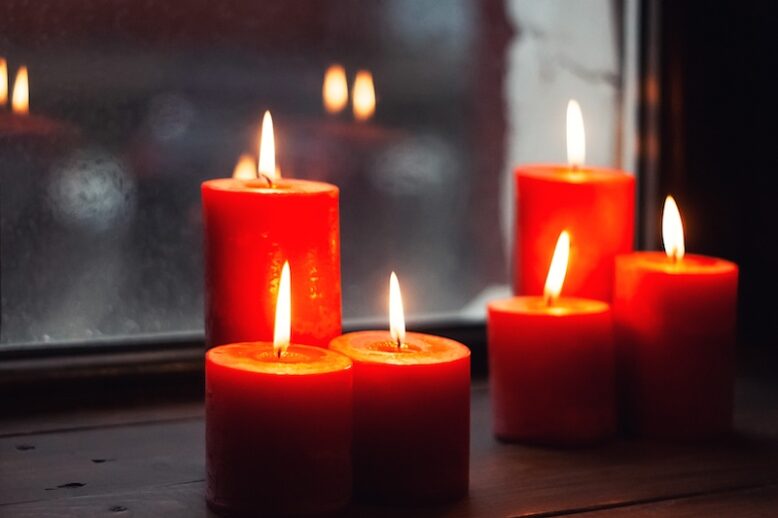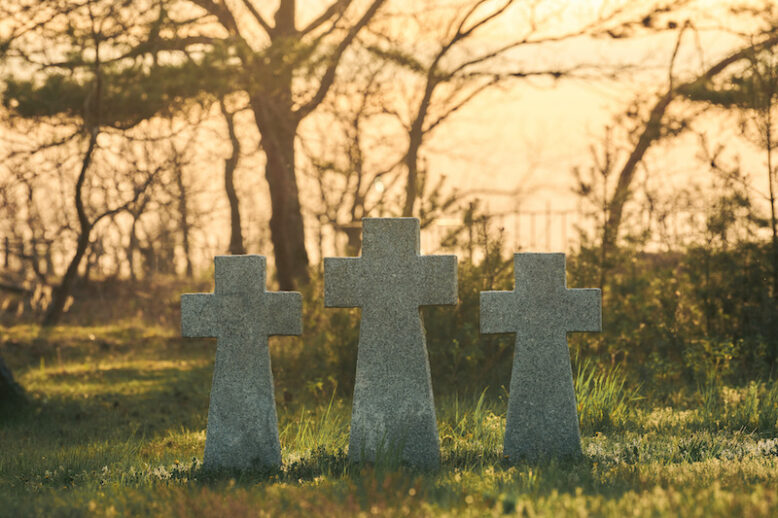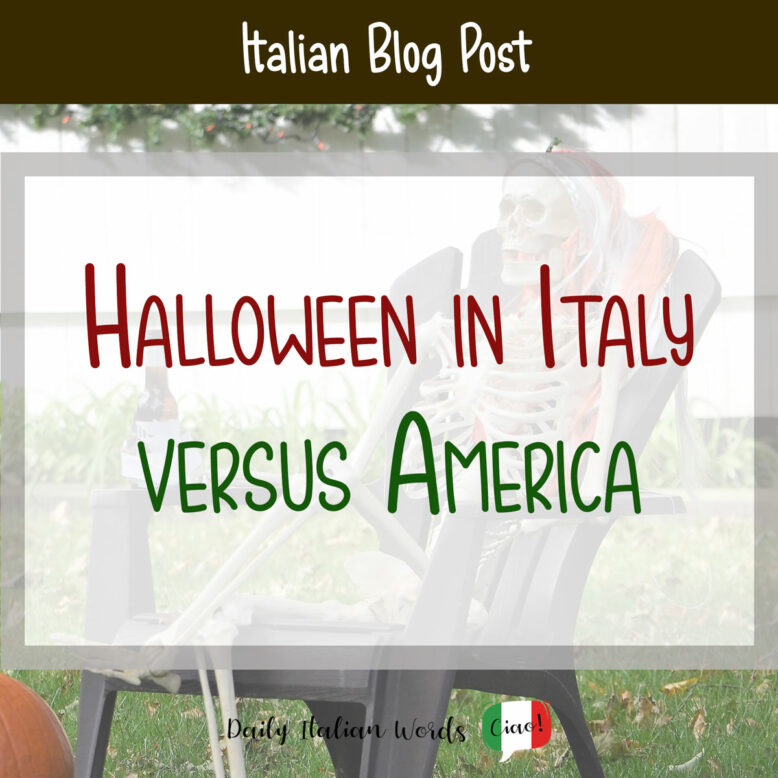I can vividly recall all the Halloween costumes I donned during my childhood. If I’m being entirely truthful, my very first Halloween is a memory captured in photographs rather than one I can recall firsthand. In those pictures, I’m dressed as a red crayon, a choice made by my parents. After I outgrew the crayon attire, I transitioned to a Blue’s Clues costume. For several years, I embraced the role of a witch in various forms – from a spooky witch to an adorable one, even a regal witch. There was also a witch costume adorned with spider web patterns and spiders, though the reason for the arachnid theme remains a mystery.
Ricordo bene i costumi di Halloween che indossavo da piccola. La verità è che del mio primo Halloween ho solo delle foto, non ricordo molto. In quelle immagini ho addosso un costume da pastello rosso, scelto dai miei genitori. Poi, quando sono cresciuta e quel costume non mi andava più, mi sono vestita come i personaggi del programma per bambini Blue’s Clues. Per un bel po’ di anni mi sono mascherata da strega, in diverse versioni: a volte paurosa, altre volte carina, e addirittura da strega regina. Ho avuto anche un costume da strega con ragnatele e ragni, anche se il perché di questo tema aracneo resta un mistero.
Halloween ranked among the most spine-chillingly wonderful days of the year. My dad would wear some comical costume, all the neighbourhood kids would assemble, and we’d roam in a large group, going from house to house in pursuit of the largest Reece’s Peanut Butter Cup and the lengthiest Pixy Stix.
Halloween era uno dei giorni più emozionanti e paurosi dell’anno. Mio padre indossava sempre costumi divertenti e noi bambini del quartiere ci riunivamo per andare di casa in casa, sperando di trovare i dolci migliori, tipo le Reese’s Peanut Butter Cup più grandi o le Pixy Stix più lunghe.
This, however, isn’t a collective memory for Italians. Halloween isn’t a traditional celebration in Italy. In fact, only the youngest generations have any recollection of celebrating it. Before that, Halloween, as I experienced it, was either a part of foreign culture or something observed solely in Hollywood films. It’s quite likely that it was these very Hollywood movies, along with the influence of social media, that spurred the sudden surge in Halloween celebrations in Italy. Nonetheless, celebrating Halloween is a relatively new tradition in the country.
Questo, però, non è un ricordo comune per gli italiani. Halloween, infatti, non è una festa tipica in Italia. Solo le nuove generazioni lo festeggiano. Una volta, Halloween, per come l’ho conosciuto e vissuto io, era visto come un’esportazione culturale o come una cosa da film americani. E, molto probabilmente, sono stati proprio quei film, insieme ai social media, a favorire la crescente popolarità di Halloween in Italia. Ma si tratta comunque di una festività ancora piuttosto nuova nel paese.

Written by our American contributor in Florence, Lyssa Yapp.
Halloween in Italy
Halloween in Italia
October 31st originated as a pagan holiday, possibly stemming from the Celtic festival of Samhain, marking the end of the harvest season. As the days grew shorter and colder, pagans believed that this was when the boundary between the living and the dead became most permeable, allowing souls to return to Earth. In present times, especially in my homeland, the United States, these pagan beliefs have largely faded. Nevertheless, the tradition of Halloween persists, characterised by children in costumes, carved pumpkins, spooky films, and the tradition of trick-or-treating.
Le celebrazioni del 31 ottobre nascono come festa pagana, presumibilmente legata al festival celtico denominato Samhain, che simboleggiava la fine della stagione del raccolto. Con l’arrivo dei giorni più corti e delle temperature più fredde, i pagani credevano che in questo periodo il confine tra il mondo dei vivi e quello dei morti si facesse più sottile, permettendo alle anime di tornare sulla Terra. Oggi questa credenza è quasi scomparsa, soprattutto nel mio paese, gli Stati Uniti. Ciò nonostante, la festa di Halloween è ancora molto sentita, con bambini travestiti, zucche intagliate, film horror e il tradizionale “dolcetto o scherzetto”.
Similarly, pagan beliefs in Italy have also faded away over the centuries. However, the traditions didn’t evolve in the same manner as they did in the United States. In fact, most of the pagan rituals either disappeared or were integrated into other holidays.
Anche in Italia le antiche credenze pagane si sono lentamente dissolte nel tempo. Ma le tradizioni si sono evolute diversamente rispetto agli Stati Uniti. Qui, infatti, molte di queste usanze sono state integrate in altre celebrazioni o sono del tutto scomparse.
In Italy, Halloween is primarily seen as an event for children. The young ones may don costumes of spooky creatures and indulge in sweets, but it’s not exceptionally widespread. Among adults, those who do partake in Halloween often view it as an opportunity to go clubbing while embracing the adopted holiday. Watching spooky movies is also becoming an increasingly popular trend among Italians.
Halloween in Italia è considerato principalmente una festa per i bambini, che indossano costumi spaventosi e possono mangiare dolcetti. Ma non è una cosa così diffusa. Tra gli adulti, chi decide di festeggiare Halloween spesso ne approfitta per trascorrere una serata in discoteca con la scusa di celebrare questa festività importata. Inoltre, negli ultimi anni, guardare film horror la notte di Halloween sta diventando un “must” tra gli italiani.

The American tradition of carving jack-o’-lanterns is also gaining traction in Italy, albeit less commonly. Regrettably, the custom of trick-or-treating hasn’t yet fully taken hold. The phrase Dolcetto o scherzetto isn’t particularly well-known, though there are some adventurous children who give it a try. The older generations might be a bit perplexed when masked children come knocking, playfully threatening tricks in exchange for treats. Instead, to satisfy their sweet tooth, kids will often visit stores or other public venues hosting special events to snag a treat.
Anche l’usanza tutta americana delle zucche intagliate si sta diffondendo in Italia, anche se non è ancora tanto diffusa come oltreoceano. Il tradizionale “dolcetto o scherzetto” non si è completamente radicato nel tessuto culturale dell’Italia, ma i bambini più audaci provano comunque a giocarci. Molti anziani potrebbero essere sorpresi nel vedere piccoli in maschera bussare alle loro porte, pronti a fare uno scherzo in assenza di dolcetti. Fortunatamente, spesso ci sono eventi organizzati in negozi o spazi pubblici dove i bambini possono soddisfare la loro voglia di dolci.
On Halloween night, children prefer to don eerie costumes like witches, vampires, or zombies. The recent American trend of dressing up as beloved princesses or superheroes isn’t as prevalent here; these playful costumes are typically reserved for Carnevale, Italy’s Mardi Gras celebration toward the end of the Lenten season.
Durante la notte di Halloween, i bambini tendono a scegliere costumi spaventosi come streghe, vampiri o zombie. Ultimamente negli Stati Uniti è comune vestirsi da principesse o supereroi, ma in Italia questi costumi sono per lo più usati a Carnevale, una festa che si svolge alla fine della Quaresima.
Among adults, especially the younger crowd, nightclubs and pubs have swiftly embraced Halloween festivities, hosting special spooky evenings in their establishments. While most adults may not wear costumes, they do enjoy the eerie ambiance that Halloween brings.
Per quanto riguarda gli adulti, in particolare i più giovani, molte discoteche e pub celebrano Halloween con serate a tema. Anche se non tutti indossano un costume, l’atmosfera spettrale tipica di Halloween è sicuramente apprezzata da molti.

All Saints’ Day
The day following Halloween, November 1st, is a religious holiday known as All Saint’s Day. While it is observed in American churches, it isn’t widely acknowledged as a holiday by the general public. In Italy, however, Ognissanti is a national holiday. Public offices are closed, schools take a break, and everyone gets to enjoy a day off.
Il 1 novembre, il giorno dopo Halloween, si celebra Ognissanti. Mentre negli Stati Uniti questa ricorrenza religiosa non è molto sentita dal grande pubblico, in Italia è considerata una festa nazionale. Quel giorno, infatti, uffici e scuole chiudono, permettendo a tutti di godersi un giorno di pausa.
This ancient holiday is intended to honour the saints and martyrs of Christianity. It originated from the efforts of early Christian leaders to diminish the popularity of pagan holidays and festivities. Therefore, Ognissanti was established on the day immediately following a significant pagan holiday, which we now recognise as Halloween.
Questa antica festività è nata per onorare i santi e i martiri del Cristianesimo. È stata istituita dai primi leader cristiani per soppiantare la popolarità delle celebrazioni pagane. Non è un caso che essa cada proprio il giorno dopo una delle principali feste pagane, oggi conosciuta come Halloween.
Clearly, the Christian leaders were unsuccessful in eradicating this pagan celebration, as it remains widely observed in the United States. However, much of the pagan rituals have evolved into enjoyable traditions that no longer bear a direct connection to paganism.
Chiaramente, gli sforzi del leader cristiani non hanno sortito gli effetti desiderati, dal momento che la festa di Halloween è rimasta molto famosa negli Stati Uniti. Tuttavia, molti dei rituali originariamente pagani si sono evoluti in allegre tradizioni che, al giorno d’oggi, hanno perso ogni connotazione pagana.
In the past, Ognissanti traditions involved placing a candle in the window to welcome departed loved ones. It was believed that on the evening of November 1st, souls in Purgatory could revisit Earth and reunite with their families. Tables were set with a feast of foods for the departed to enjoy.
Una volta, per Ognissanti, si mettevamo candele alle finestre per accogliere le anime dei defunti. Si credeva infatti che la sera del 1 novembre le anime del Purgatorio tornassero sulla Terra per riunirsi con i loro cari. Era usanza anche preparare un banchetto per nutrire queste anime.

Different Italian regions and cities had their unique customs for honouring the deceased. In Puglia, residents adorned the streets with pumpkins and lit bonfires to provide warmth and extend a welcome to the departed. In Sicily, parents would prepare small gifts or sweet treats for their children. Much like with Santa Claus, parents would inform their children that if they behaved well and said their prayers, the departed souls would come and leave something special for them. In Abruzzo, children would go from door to door, akin to trick-or-treating, asking for gifts to be offered to the departed souls; typically, these gifts were fresh or dried fruits or sweets. A similar tradition is also observed in Sardinia.
Diverse regioni e città italiane avevano tradizioni uniche per onorare i defunti. In Puglia, ad esempio, le strade venivano decorate con zucche e si accendevano falò per accogliere e dare calore alle anime dei cari scomparsi. In Sicilia, i genitori preparavano piccoli regali o dolcetti per i loro bambini, a cui dicevano che le anime dei defunti avrebbero lasciato loro doni se si fossero comportati bene e avessero detto le loro preghiere, proprio come Babbo Natale. In Abruzzo, i più piccoli andavano di casa in casa in modo simile alla tradizione del “dolcetto o scherzetto”, chiedendo doni da offrire alle anime dei defunti; generalmente, si trattava di frutti freschi o secchi oppure dolci. Una tradizione simile si osservava anche in Sardegna.
In numerous regions, families would go for a stroll after dinner to pay a visit to the cemeteries. It was believed that during this period when the house was vacant, the departed souls would come in and partake in whatever food was set out for them.
In molte regioni, le famiglie, dopo cena, andavano al cimitero. Si credeva infatti che, in loro assenza, le anime dei defunti entrassero in casa consumando il cibo preparato in loro onore.

Following the visit to the cemetery, just before returning home, families would ring bells. The ringing of the bells served as a signal to the visiting souls, allowing them to discreetly leave the home before the family returned.
Al ritorno dal cimitero, prima di rientrare in casa, le famiglie suonavano il campanello come segnale con cui avvisavano le anime in visita a congedarsi discretamente prima che rientrassero.
Among the various customary foods offered to the departed, some were specially baked for the occasion and often carried symbolic significance related to the deceased. For instance, Pan dei Morti (literally “bread of the dead”), a prevalent treat during the extended weekend, is referred to as “bread” but more closely resembles a small cookie. Its recipe is laden with symbolism for the afterlife. The ingredients include repurposed cookies, almonds, pine nuts, figs, dried fruits, cocoa, and other standard cookie-making elements. Using leftover cookies to craft a new one symbolises transformation and renewal. Figs and dried fruit have an ancient pre-Christian tradition of being offerings to the departed. Cocoa is employed as a natural dye, giving the cookies the hue of burial soil. The end result is a dense, chewy cookie with delightful bits of crunch from the leftover cookie crumbs and nuts.
Tra i vari piatti tradizionali preparati in onore dei defunti, alcuni erano fatti apposta per questa occasione e spesso avevano un significato simbolico. Prendiamo ad esempio il Pane dei Morti, un dolce diffuso durante il lungo weekend. Anche se viene chiamato “pane”, assomiglia di più a un piccolo biscotto. La sua ricetta è piena di riferimenti all’aldilà. Gli ingredienti includono biscotti avanzati, mandorle, pinoli, fichi, frutta secca, cacao e altri ingredienti tradizionalmente usati per fare i biscotti. Usare biscotti avanzati per creare un nuovo dolce è simbolo di trasformazione e rinnovamento. Fichi e frutta secca sono offerte antiche ai defunti in età pre-cristiana. Il cacao dà al biscotto un colore che ricorda il terreno di sepoltura. Il risultato finale è un biscotto dalla consistenza densa e gommosa, con deliziosi pezzetti croccanti di noci e biscotto.

In present times, the traditions of Ognissanti are gradually waning. It is primarily the older generations and close-knit communities that continue to cherish these customs. For many modern, urban-dwelling Italians, Ognissanti is simply seen as another day off from work.
Oggi, le tradizioni legate a Ognissanti stanno gradualmente scomparendo. Sono soprattutto i più anziani e alcune piccole comunità a tenerle vive. Per tanti italiani, specialmente quelli che vivono in città, la festa di Ognissanti è diventata solo un giorno di riposo dal lavoro.
Day of the Dead
Giorno dei Morti
November 2nd is also a holiday: the Giorno dei Morti (Day of the Dead), also known as All Souls Day. On this day, many Italians commemorate the memory of their loved ones, visit cemeteries, and take care to tidy up the graves and tombstones of their deceased family members.
Anche il 2 novembre è un giorno di festa: si celebra il Giorno dei Morti, o Commemorazione dei Defunti. In questo giorno, molti italiani rendono omaggio ai propri cari defunti visitando i cimiteri e prendendosi cura delle loro tombe e lapidi.
While at the cemeteries, it is customary for Italians to come across old tombstones, some so ancient that there are no remaining family members to tend to them. They take it upon themselves to clean these gravestones and leave flowers as a sign of respect. Chrysanthemum flowers are particularly abundant during this season and are the most common choice for adorning graves in Italian cemeteries.
Durante queste visite al cimitero, non è raro trovare vecchie lapidi, talvolta così datate da non avere più parenti che se ne occupino. In segno di rispetto, molte persone decidono di prendersi cura di queste tombe e lasciare dei fiori. I crisantemi, tipici di questa stagione, sono spesso scelti per decorare le tombe nei cimiteri italiani.

Unfortunately, these traditions are fading in contemporary times. They still thrive in smaller, more traditional villages where both pagan and Christian influences remain strong. However, for the majority of people in cities, November 1st has become just a day off work, and November 2nd is treated as any other day. In fact, November 2nd is not a national holiday, and it’s highly likely that most modern Italian families have to return to work or school on this day.
Purtroppo, queste tradizioni stanno lentamente scomparendo, soprattutto nelle aree urbane. Mentre resistono nei paesini in cui tradizioni pagane e cristiane persistono, nelle grandi città il 1 novembre è spesso solo un giorno di riposo, e il 2 novembre è vissuto come un giorno qualunque. Infatti, non essendo una festa nazionale, il 2 novembre molti ritornano a scuola o al lavoro.
On the other hand, American Halloween traditions have made their way into Italian culture. The American version of Halloween is a rapidly growing trend that is gradually establishing itself as a tradition, even as the Italian customs of Ognissanti and the Giorno dei Morti slowly diminish.
Contemporaneamente, Halloween, nella sua versione americana, sta guadagnando popolarità in Italia, mentre le antiche tradizioni di Ognissanti e del Giorno dei Morti vanno attenuandosi.


Heather Broster is a graduate with honours in linguistics from the University of Western Ontario. She is an aspiring polyglot, proficient in English and Italian, as well as Japanese, Welsh, and French to varying degrees of fluency. Originally from Toronto, Heather has resided in various countries, notably Italy for a period of six years. Her primary focus lies in the fields of language acquisition, education, and bilingual instruction.


